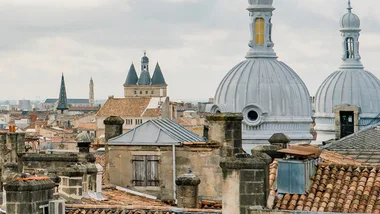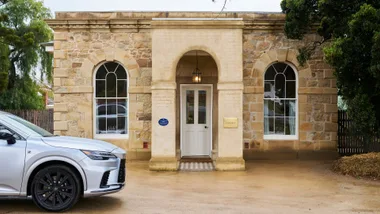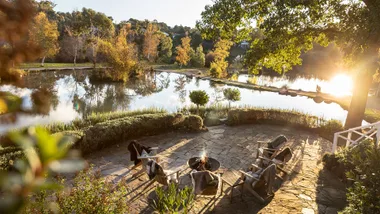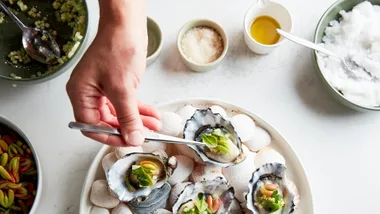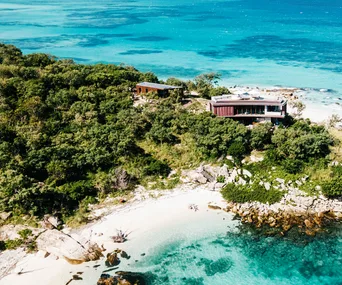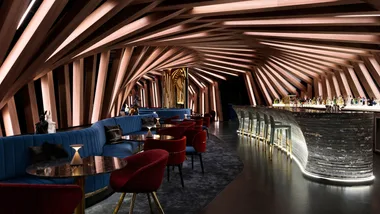Brought to you by Catalan Tourist Board.
Home to more than 50 Michelin-starred restaurants and nestled in the north-eastern corner of Spain, Catalonia is renowned for its gastronomic history and culture.
Catalonian cuisine is celebrated the world over and can be enjoyed year-round. For food lovers, the region is a feast for the senses, from its signature sparkling wines, cavas, to traditional artisan cheeses and meats, magnificent olive oils and authentic local flavours.
Catalonia has been awarded the prestigious World Region of Gastronomy in 2025 by the International Institute of Gastronomy, Culture, Arts and Tourism (IGCAT), in recognition of the region’s unique culture and the exciting developments happening at a local level in sustainability and innovation.

From the ocean to the mountains, Catalan food reflects the uniqueness of its regions.
Take a Grand Tour of Catalonia
Catalonia has five main regions, each with unique landscapes and cultures and is home to more than 30 UNESCO World Heritage sites. It pays to take your time to discover its diverse specialities, and the best way to do this is by car. The Grand Tour of Catalonia is a driving itinerary through each region that allows visitors to experience the tastes, terrain, and culture of each, at a civilised pace. It can be taken as a 13 day ‘iconic route’ or as a more leisurely scenic drive in five sections of five to seven days.
The Grand Tour is designed as a loop, so you can join at any point, but Barcelona is a popular starting point for its convenience and access. From iconic cities to charming villages on the Mediterranean shoreline and soaring mountain wilderness in the Catalan Pyrenees, here’s a snapshot of what you can expect to see as you explore.

Sample cava, the local sparkling wine at Codorníu’s wine cellar in Barcelona, designed by the modernist architect Josep Puig.
Region one: Barcelona to Tarragona
Take your pick of Barcelona’s three-starred Michelin restaurants. The tasting menu from ABaC chef Jordi Cruz features avant-garde techniques that make the local produce sing in a stunning garden setting. Signature dishes are Roman-style squid, cured red shrimp and raisin-dried hanging tomato. Or try Lasarte for a seasonal, artfully formed a la carte or tasting menus, or indulge in the ultimate ‘chef’s table’ and observe chef Martín Berasategui in his element.
Lower key but no less inspiring are the busy local taverns on the way to Roman Tarragona. The dry conditions of the Prioriat region produce excellent red wine and cava, the famous Catalan sparkling wine. Discover the vineyards and wineries of El Penedès, the beaches of El Garraf and the north of the Costa Daurada.
Don’t miss: The stunning view from Montserrat and the historic seaside town of Sitges – order the local specialty, Calamars a la Sitgetana.

Fresh air, a crisp local white, and fresh mussels from Sant Carles de la Ràpita.
Region two: Tarragona to Lleida
From Tarragona, follow the shoreline of the Costa Daurada, and stop for superbly fresh seafood in Cambrils. The route follows the course of the river Ebro inland and on to Lleida through orchards, vineyards and olive groves, so allow yourself time to stop and enjoy the local produce. Visit the extraordinary ‘wine cathedrals’ of La Terra Alta and El Priorat, and the monasteries along the Cistercian Route.
Don’t miss: A glass of the region’s famous vermouth. Discover a Catalan classic: romesco sauce with calçots in Cambrils, the gastronomic capital of Costa Daurada. Catch the annual Calçotada festival at the end of January, with char-grilling demonstrations, grower competitions and special menus.

Calçots, a type of grilled onion, are a staple of Catalan cuisine and paired with romesco sauce are a regional delicacy.
Region three: Lleida to La Seu d’Urgell
From historic Lleida you leave the plains and head toward the heavens in the Catalonian Pyrenees and the breathtaking vistas of La Val d’Aran. Wander medieval villages, savour the aromas and exquisite flavours of extra virgin olive oils from ancient olive groves in Les Garrigues and sample local wines by Gregorio Inglesias, “wrapped between heaven and earth”. Indulge in lovingly made artisan cheeses and traditional Aranese olha sausages, farmhouse bread and fresh tomatoes on the way to La Seu d’Urgell.
Don’t miss: Stargazing at the incredible night skies in Montsec in the dry, quiet highlands of the Catalonian Pyrenees.

Follow in the footsteps of the ancestors in Cadi National Park in the Catalonian Pyrenees.
Region four: La Seu d’Urgell to Figueres
Starting at La Seu d’Urgell, head east over the Catalan Pyrenees along the edge of El Cadí-Moixeró Natural Park. Experience La Garrotxa Volcanic Zone Natural Park and sample the region’s famous volcanic food delicacies, such as patates d’Olot, a hearty stuffed potato dish, Santa Pau beans and butifarra sausage before arriving in Figueres, home of Dalí.
Don’t miss: Any dish with the local black truffle, a feature of Catalan volcanic food regions.

A farmer drying traditional Fuet in Vic.
Region five: Figureres to Barcelona
The influence of Dali is palpable around Figueres, particularly Cadaqués and Cape Creus Natural Park. Continue along the rocky coastline of Costa Brava, taste the sea in the plump anchovies from L’Escala and freshly caught prawns from Palamos. In Vic, sample its famous sausages, longanizas and visit the vineyards of DO Empordà. Fine dining in stunning outdoor settings is a must in Costa Brava before rounding out your Grand Tour in Barcelona.
Don’t miss: Medieval towns of the region and the historic city of Girona, home to three-time Best Restaurant in the World, the three-starred Michelin El Celler de Can Roca. Experience the genius of the Roca brothers: the savoury palate of Joan, the liquid expertise of sommelier Josep and the sweet prowess of Jordi.
Brought to you by Catalan Tourist Board.
Main image: Breakfast at Can Cuch Gastronomic Hotel, Montseny.

